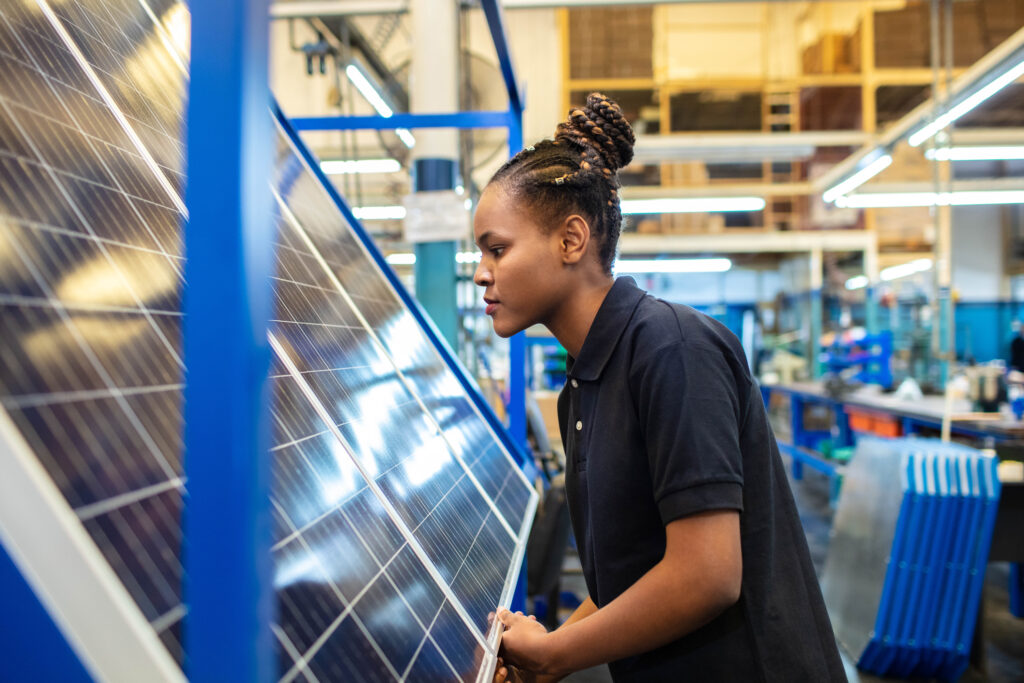
A panel of experts imagines the framework by which American can lead the global low-carbon economy.
The Information Technology and Innovation Foundation (ITIF) on Thursday held an event focused on making US manufacturing clean and competitive in the global low-carbon economy. The discussion hinged around ITIF’s new research that identified opportunities for the US manufacturing sector to develop in certain industries where the United States enjoys a comparative advantage. But the ultimate goal of the event was to highlight how we can create new manufacturing jobs that are good for the climate, our economy, and our long-term security.
“One of the things I love about this report is the way it weaves together two challenges that are far too often treated separately: revitalizing domestic manufacturing and decarbonizing industry, said keynote speaker Jane Flegal, the current (and first-ever) Senior Director for Industrial Emissions in the White House Council on Environmental Quality. “This is exactly how we see things in the [Biden] administration as well.”
For frequent readers of this blog, the prospect of tying together manufacturing and climate policy is quite familiar, as it’s a perspective from which the Alliance for American Manufacturing has been advocating for some time.
As Ms. Flegal said, “To remain strong economically or otherwise, the U.S. must rebuild its manufacturing sector. And the clean energy transition creates an opportunity to invest, to ensure that we make many of the products that underpin the clean energy economy here and creates real opportunities for communities.”
Specifically, the report identified several sectors for the U.S. to invest in greater manufacturing capabilities. These include boosting American hydrogen production — in part through carbon capture and sequestration — investing in advanced heat pump technology with federal loans tied to domestic content standards, pursuing more R&D in the chemical manufacturing industry, and investing in alternative protein manufacturing (think of products like Beyond Meat). All of these emerging industries are sectors where the US has the potential to dominate, ensuring that as jobs inevitably emerge around these technologies, they do so in the States and not abroad.
Rep. Paul Tonko (D-NY), another keynote speaker at the event, remarked that, “Investing in our manufacturing is the key to our long-term global competitiveness. America can and should manufacture products with the lowest emissions in the world. If we do not, America’s competitors will make those same products with weaker environmental and labor standards.”
The consequences of ignoring these emerging industries could be dire. As panelist Jason Walsh, the Executive Director of the BlueGreen Alliance observed, “As US manufacturing activity declined in the 2000s, domestic manufacturing employment fell off a cliff. This was bad for workers and the climate: We offshored both American jobs and pollution. We never got the jobs back, but we got the pollution back.”
We now have the opportunity to fix that mistake; to rebuild American manufacturing and fight climate change in the process. The investments outlined in the report will need to be considered by policymakers, who must act with urgency to ensure that the country does not again miss its moment to lead the world in manufacturing the technologies that will drive our global future.
Of course, such investments come with their own set of challenges, and while the panelists discussed various frameworks for overcoming them, it will be up to the White House and Congress to come up with the legislation. Chief among these obstacles will be to ensure that federal support for innovation doesn’t just go to inventing new technology, but to manufacturing the products derived from it in America. This can be accomplished with domestic content requirements, which Mr. Walsh noted will have the added benefit of helping to “build out supply chains for emerging technologies.”
As consensus grows for tying together manufacturing and climate policies, one thing is clear: policies must be enacted to swiftly meet the moment before it becomes too late. The low-carbon emissions economy is rapidly growing, and it’s an imperative that American manufacturers are the ones who lead in this new era of the global economy.
Read the new ITIF report. And watch the whole event here:
